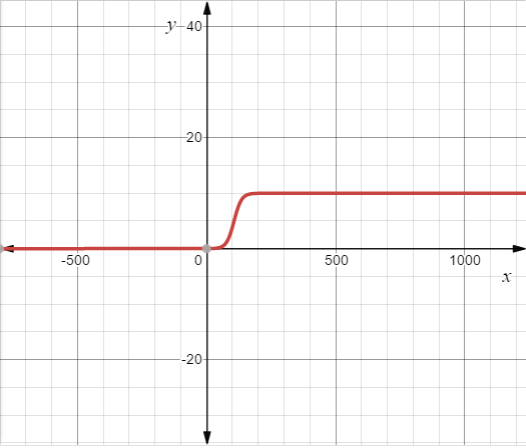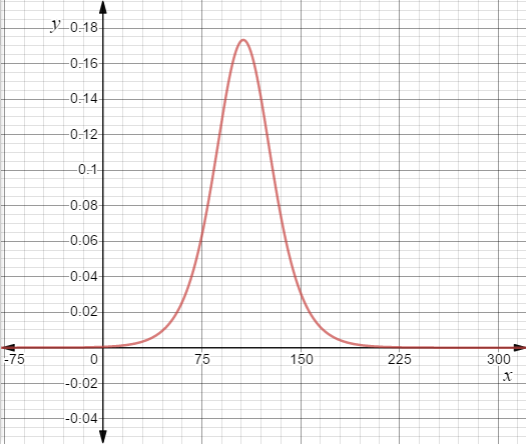
Concept explainers
a.
To graph: The function
a.
Explanation of Solution
Given Information: Monthly profit is given by
Graph:
Putting different values of x in the function and plotting the corresponding results,

Thus, the function is graphed.
b.
The values of
b.
Answer to Problem 29E
The values of
Explanation of Solution
Given Information: Monthly profit is given by
Thus,
c.
To use: NDER to graph
c.
Answer to Problem 29E
Explanation of Solution
Given Information: Monthly profit is given by
Calculation:
Putting different values of x in the

Thus, as can be observed in the graph,
d.
The profit when marginal profit is greatest.
d.
Answer to Problem 29E
Profit when marginal profit is greatest is
Explanation of Solution
Given Information: Monthly profit is given by
Graph of
As profit is in thousand dollars, answer is
e.
The marginal profit when
e.
Answer to Problem 29E
The approximate values are mentioned below.
Explanation of Solution
Given Information: Monthly profit is given by
As graph of
Thus, the approximate values are mentioned above.
f.
f.
Answer to Problem 29E
The limit is
Explanation of Solution
Given Information: Monthly profit is given by
Calculation:
Calculating the limit,
Thus, the limit is
g.
If there is a practical explanation to the maximum profit answer and then to explain the reasoning.
g.
Answer to Problem 29E
Yes, because company could have reached maximum scalability.
Explanation of Solution
Given Information: Monthly profit is given by
Yes, the company may not be able to go beyond the profit level of
Chapter 3 Solutions
Calculus 2012 Student Edition (by Finney/Demana/Waits/Kennedy)
Additional Math Textbook Solutions
Calculus and Its Applications (11th Edition)
University Calculus: Early Transcendentals (4th Edition)
Calculus: Early Transcendentals (3rd Edition)
Calculus: Early Transcendentals (2nd Edition)
Calculus & Its Applications (14th Edition)
 Calculus: Early TranscendentalsCalculusISBN:9781285741550Author:James StewartPublisher:Cengage Learning
Calculus: Early TranscendentalsCalculusISBN:9781285741550Author:James StewartPublisher:Cengage Learning Thomas' Calculus (14th Edition)CalculusISBN:9780134438986Author:Joel R. Hass, Christopher E. Heil, Maurice D. WeirPublisher:PEARSON
Thomas' Calculus (14th Edition)CalculusISBN:9780134438986Author:Joel R. Hass, Christopher E. Heil, Maurice D. WeirPublisher:PEARSON Calculus: Early Transcendentals (3rd Edition)CalculusISBN:9780134763644Author:William L. Briggs, Lyle Cochran, Bernard Gillett, Eric SchulzPublisher:PEARSON
Calculus: Early Transcendentals (3rd Edition)CalculusISBN:9780134763644Author:William L. Briggs, Lyle Cochran, Bernard Gillett, Eric SchulzPublisher:PEARSON Calculus: Early TranscendentalsCalculusISBN:9781319050740Author:Jon Rogawski, Colin Adams, Robert FranzosaPublisher:W. H. Freeman
Calculus: Early TranscendentalsCalculusISBN:9781319050740Author:Jon Rogawski, Colin Adams, Robert FranzosaPublisher:W. H. Freeman
 Calculus: Early Transcendental FunctionsCalculusISBN:9781337552516Author:Ron Larson, Bruce H. EdwardsPublisher:Cengage Learning
Calculus: Early Transcendental FunctionsCalculusISBN:9781337552516Author:Ron Larson, Bruce H. EdwardsPublisher:Cengage Learning





